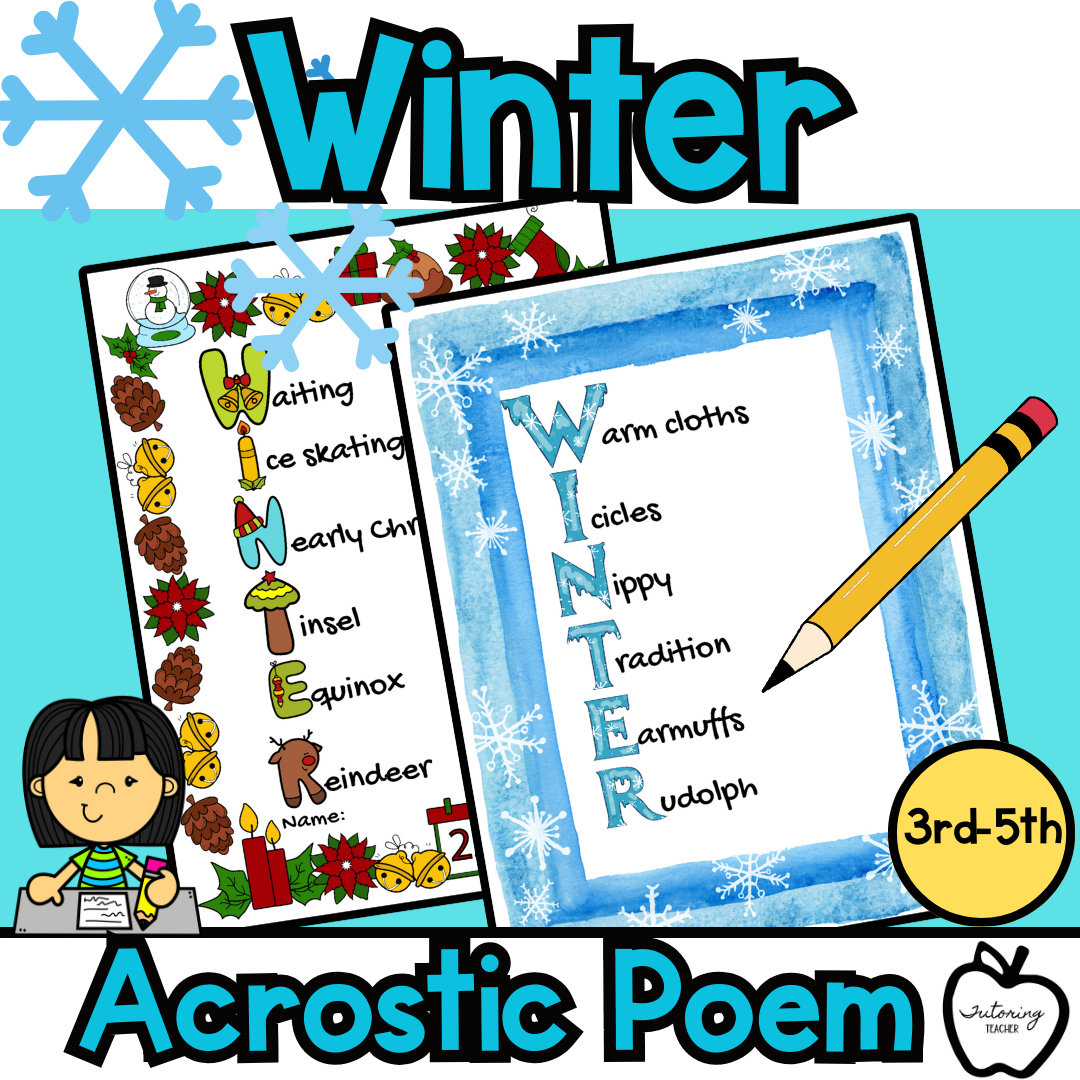Crafting Creativity with Acrostic Poems

Poetry has many different shapes and forms. Among these, the acrostic poem stands out as a versatile form that not only sparks creativity but also serves as an effective educational tool. Let's take a closer look at the ways in which you can explore imagination and cultivate a deeper understanding of poetry and language. Not to mention the importance of how it can help English learners.
Encouraging Creativity and Expression:
Acrostic poems are an expressive art form that I love to use in the classroom as the seasons change both for learning and for decorations. Acrostic poems provide a playful yet structured framework for students to express themselves creatively. By utilizing the letters of a word or phrase to form the initial letters of each line, individuals are encouraged to think innovatively, weaving words that relate to the central theme. This form allows for the exploration of language, encouraging students to play with vocabulary, imagery, and sound. Some students may still need additional support with the language, such as English Language Learners, which is a great opportunity for them to mimic using English with Word or Phrase Lists to help support their development.
Enhancing Language Skills:
The construction of an acrostic poem necessitates a deep engagement with language. Students not only exercise their vocabulary but also refine their understanding of syntax, word choice, and sentence structure. I usually give students an opportunity to use a thesaurus. It also gives you an opportunity to teach shades of meaning to students as well as similes and metaphors. In the process of crafting these poems, learners naturally expand their linguistic abilities, discovering new words and ways to articulate their thoughts.
Promoting Critical Thinking and Focus:
The structure of an acrostic poem requires thoughtful consideration of the theme or word being explored. It challenges students to think critically about the subject matter, brainstorming words or phrases that best encapsulate its essence. I usually give students a scratch paper to come up with ideas on, then craft a rough draft. Once they have created a well thought out acrostic poem, I give them the final draft paper. This process hones their ability to focus, organize thoughts, and select relevant information, fostering cognitive skills essential for academic success.
Versatility Across Subjects and Grades:
I have used this activity from Kindergarten to 5th grade for many different occasions. It is one of my go-to activities for the holiday season. It can easily be adapted for older students and any subject matter providing a deeper connection through critical thinking on the subject matter.
Acrostic poems, with their blend of structure and creative freedom, serve as more than just a poetic form; they are invaluable educational instruments. They foster creativity, enhance language skills, promote critical thinking, encourage reflection, and adapt seamlessly across diverse educational settings. By incorporating acrostic poems into the curriculum, educators can unlock the imaginative potential of students while nurturing a deeper appreciation for the beauty and power of language.
